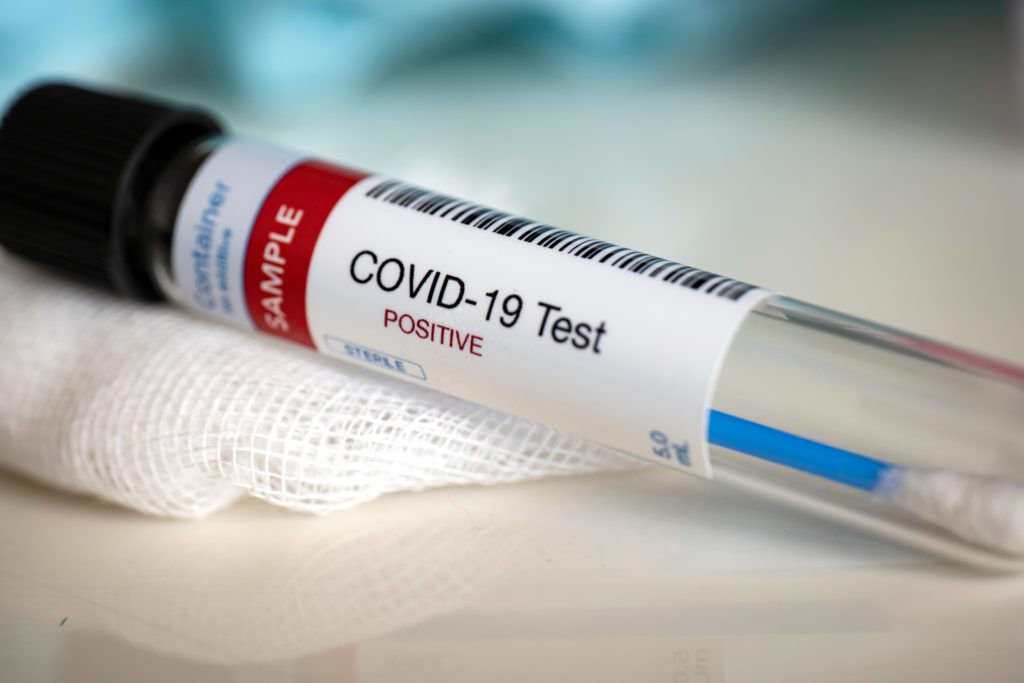By Christopher Reeves, MD
This is the final entry in a three-part blog series. Click here to read the first blog on COVID-19 immunity and here to read the second blog on COVID-19 preventive strategy.
Whenever someone who’s been diagnosed with COVID-19 calls me, their overwhelming response to the news is fear. No matter your age or risk level, when you contract a virus that’s claimed millions of lives and consistently dominates the headlines, it’s easy to assume the worst.
The coronavirus is scary — that’s undeniable. But if you’re not careful, the fear of contracting the virus can distract you from making a measured, proactive response if you do get sick. If you open your phone to find your latest PCR test has come back positive, the battle, fortunately, is far from over.
A 2020 peer-reviewed study, led by Peter A. McCullough and published in The American Journal of Medicine, outlines an effective combination of outpatient treatments to manage your symptoms and reduce the risk of coronavirus-related hospitalization and death. If you’ve tested positive for COVID, take the time to consider these remedies.
Before you read further, know that you always should consult your physician before taking any course of action to make sure it’s most closely tailored to your specific health needs. Just know the following treatment options are out there.
“Person A” — under 50 with no comorbidities
The younger you are, the less likely you are to be hospitalized or die from COVID-19, so your response to a positive test involves less urgency. If you’re younger than 50 and don’t have any comorbidities (conditions that put you at greater risk of severe illness from COVID-19), we’ll call you “Person A.”
The first step McCullough and co. outline for Person A after a positive test is simple: watchful waiting. It’s as easy as it sounds: Put yourself in full self-quarantine and closely monitor your symptoms (fever or chills, cough, shortness of breath, fatigue, body aches, new loss of taste or smell, sore throat, congestion or runny nose, nausea or vomiting, diarrhea).
During this period, care for yourself how you normally would with any virus; take Tylenol or Advil if you have a fever, get plenty of rest and drink lots of fluids. I also recommend taking several daily supplements during this period: about 220 milligrams of zinc, which disrupts coronavirus replication; about 5,000 international units (IU) of Vitamin D3, which is associated with decreased COVID-19-related hospitalization; and 2,000 to 3,000 milligrams of Vitamin C, whose antioxidants help cells to repair.
If your symptoms worsen (which, if you’ve contracted the delta variant, may occur more quickly), step two is to ask your doctor about taking antiviral medicines. You can pair 200 milligrams of hydroxychloroquine (HCQ) with either 250 milligrams of azithromycin or 100 milligrams of doxycycline. Either of these antibiotics with antiviral properties that you opt for should be taken twice a day by mouth until symptoms recede.
Should your symptoms get even worse, or your illness stretches into its fifth day, ask your doctor about adding an age- and weight-appropriate dose of prednisone — an anti-inflammatory — every day for the next five days. You also might be prescribed another anti-inflammatory, colchicine.
In extreme cases, you might begin to suspect micro- or overt thrombosis, which occurs when blood clots block your veins or arteries. When thrombosis symptoms (pain and swelling in one leg, chest pain or numbness on one side of the body) appear, it’s time to receive extra clinical attention. You can also incorporate 81 milligrams per day of aspirin and take one of various antithrombotic medications — as long, of course, as your doctor gives you the okay.
“Person B” — 50-plus or a single comorbidity
People aged 50 or older are at least four times as likely to become hospitalized with COVID-19 than 18-to-29-year-olds, comorbidities notwithstanding. But the risk level is similar for younger people with a single comorbidity such as cancer, diabetes, obesity or a history of smoking, evidence shows. We’ll therefore lump 50-plus-year-olds and younger people with a single comorbidity into a composite individual called “Person B.”
Person B’s response to a positive test should be more urgent than Person A’s. Instead of watchful waiting, Person B should take immediate remedial action. On top of simple measures like getting fresh air, McCullough and his team recommend immediately taking zinc lozenges or 220 milligrams of zinc sulfate five times daily. Person B should also jump straight into step two of Person A’s treatment sequence, taking a combination of antivirals.
After that, Person B’s recommended treatment algorithm is virtually identical to Person A’s: take anti-inflammatory medicine and, if thrombosis pops up, add aspirin and antithrombotic medications, and escalate clinically.
“Person C” — 50-plus and one or more comorbidities
If you’re 50 or older and have one or more comorbidities, your suggested COVID-19 treatment sequence is identical to Person B’s, with one added measure: continuous empiric management. Make sure a medical professional is regularly observing your symptoms and offering personalized guidance.
Another option to discuss with your doctor if you’re high-risk and have tested positive is monoclonal antibody therapy, which introduces lab-produced antibodies into your bloodstream to give your immune system a leg-up. It’s available at many locations nationwide, though experts note it is not a substitute for vaccination.
What else to know during recovery
I’ve outlined suggested treatments because it’s crucial to pull out all the stops to manage a COVID infection before hospitalization becomes necessary. The COVID-19 mortality rate goes up for people who end up in the hospital, and it only increases once someone arrives in the intensive care unit (ICU).
However, some personal care or family practice physicians simply don’t treat COVID-19 — and, as I said, consulting your physician after a positive test is crucial. But thanks to the advent of telehealth, you can easily find a physician who will treat you virtually and aid in your recovery. (I find this list of telemedicine providers curated by C19Protocols to be a good place to start.)
You also might have noticed that some of the supplements and medications mentioned in this blog post are typically used to treat other diseases or disorders. For instance, hydroxychloroquine is a common diabetes treatment. Its use to treat COVID-19 is an example of a practice called off-labeled use, which is more common than you’d think.
Off-labeled use occurs whenever one uses a certain medication or supplement for a purpose outside its originally intended use. A 2006 study found that 21% of prescriptions in a group of commonly used medications were prescribed for an off-label use. This practice has proven effective in the areas of anesthesiology, cardiology, dermatology and allergy treatment. So don’t let the idea of using a diabetes treatment freak you out when it comes to COVID-19 recovery. Plus, since diabetes is such a common coronavirus comorbidity that, for diabetics who come down with COVID-19, it can be an effective “double-treatment.”
As for vaccinated people, while the COVID-19 vaccine does help reduce the severity of illness, a global rise in breakthrough cases show that even inoculated people can benefit from these outpatient treatments. We’ve seen recent coronavirus outbreaks in highly vaccinated countries like Israel and Singapore, with 75% of new cases in the latter country among vaccinated individuals. With increasing evidence that the vaccine does not reliably prevent virus spread so much as it prevents severe illness and hospitalization, treatments for infection are even more important to bring to the forefront of the public discussion around COVID-19. (And, of course, continued testing efforts remain as critical as ever — which is where we come in.)
Still, remember that the COVID-19 morbidity rate in our country is extremely low — only 1.6% overall, as of early September. And by taking proactive measures, you’re giving yourself the best leg up on the coronavirus that you possibly can. So even if there’s a plus sign on your latest COVID-19 test result, hold out hope: There’s a lot of fight left in you.
Christopher Reeves, MD, is chief medical officer of Worksite Labs.




